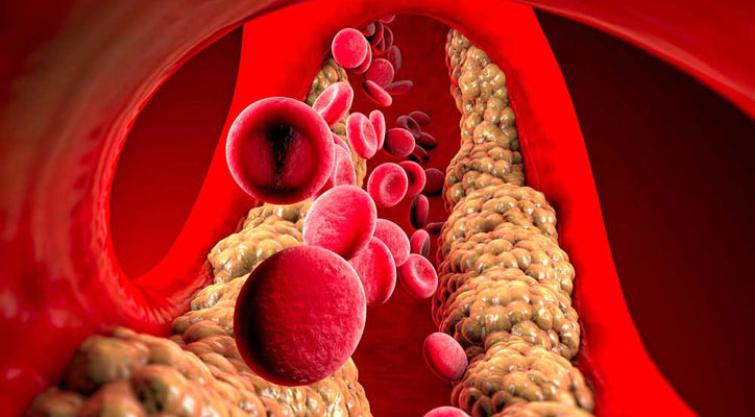By FnF Correspondent | PUBLISHED: 03, Jun 2025, 16:22 pm IST | UPDATED: 03, Jun 2025, 16:22 pm IST
 New Delhi: Triglycerides are a type of fat that is found in your blood. When your body has excess calories that it doesn't need, it converts them into triglycerides. These are then stored in your fat cells and are later released when you need energy between meals. If you eat excess calories regularly, your body will store higher amounts of triglycerides, which eventually increases your triglyceride levels.
New Delhi: Triglycerides are a type of fat that is found in your blood. When your body has excess calories that it doesn't need, it converts them into triglycerides. These are then stored in your fat cells and are later released when you need energy between meals. If you eat excess calories regularly, your body will store higher amounts of triglycerides, which eventually increases your triglyceride levels.When you have high triglycerides, also known as hypertriglyceridemia, it can lead to several health issues. From impacting your heart to increasing your risk of stroke, the impact of high triglycerides can be dangerous. Here's what happens to your body when you have high triglyceride levels.
High triglyceride levels can lead to cardiovascular diseases. When triglycerides build up in the blood, they lead to the hardening and thickening of artery walls, which is also known as atherosclerosis. This condition narrows the arteries, restricts blood flow and increases the risk of heart attack, stroke and coronary artery disease.
High triglycerides are usually a part of metabolic syndrome, which is a group of conditions that also includes high blood pressure. When blood vessels narrow down due to plaque buildup, the heart tends to work harder to pump blood, which eventually increases your blood pressure levels.
When you persistently have high triglyceride levels, it can damage the small blood vessels and nerves, especially in your hands and feet. This can result in peripheral neuropathy, which causes numbness, tingling, or pain in the hands and feet.
When triglyceride levels are high, excess fat tends to get accumulated in liver cells, leading to non-alcoholic fatty liver disease (NAFLD). Over time, this can cause liver inflammation, scarring (fibrosis) and even liver failure.
High glyceride levels usually happen along with insulin resistance, which is a condition wherein the body's cells don't respond to insulin. This causes the pancreas to produce more insulin, thereby increasing blood sugar levels. Over time, this can lead to type 2 diabetes.
Disclaimer: Tips and suggestions mentioned in the article are for general information purposes only and should not be construed as professional medical advice. Always consult your doctor or a dietician before starting any fitness programme or making any changes to your diet.

by : Priti Prakash
This week has thrown up a firestorm of global developments. Let's dive into the top 5 internati...